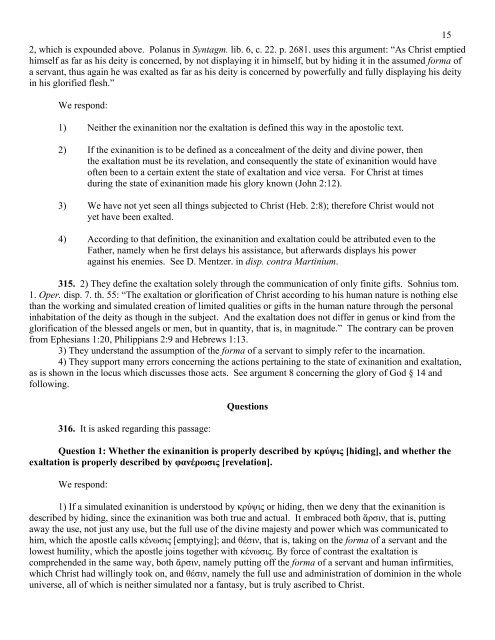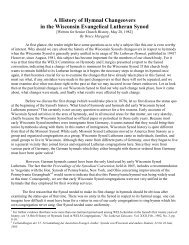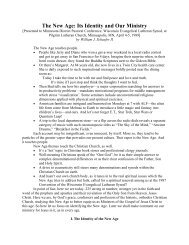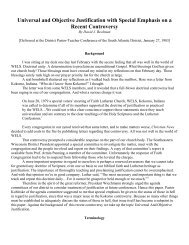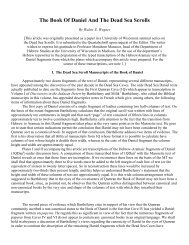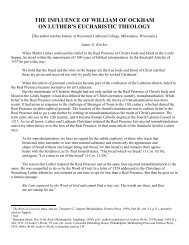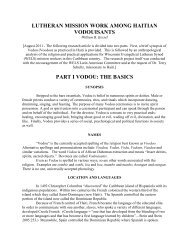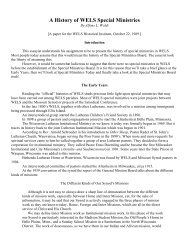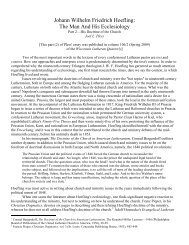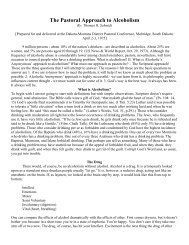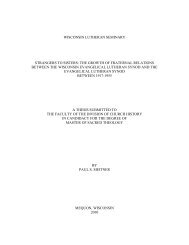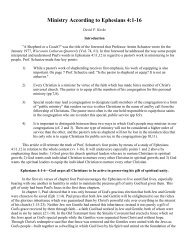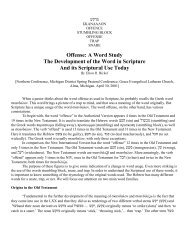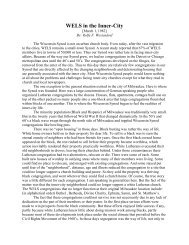Loci Theologici Loci Theologici
Loci Theologici Loci Theologici
Loci Theologici Loci Theologici
You also want an ePaper? Increase the reach of your titles
YUMPU automatically turns print PDFs into web optimized ePapers that Google loves.
15<br />
2, which is expounded above. Polanus in Syntagm. lib. 6, c. 22. p. 2681. uses this argument: “As Christ emptied<br />
himself as far as his deity is concerned, by not displaying it in himself, but by hiding it in the assumed forma of<br />
a servant, thus again he was exalted as far as his deity is concerned by powerfully and fully displaying his deity<br />
in his glorified flesh.”<br />
We respond:<br />
1) Neither the exinanition nor the exaltation is defined this way in the apostolic text.<br />
2) If the exinanition is to be defined as a concealment of the deity and divine power, then<br />
the exaltation must be its revelation, and consequently the state of exinanition would have<br />
often been to a certain extent the state of exaltation and vice versa. For Christ at times<br />
during the state of exinanition made his glory known (John 2:12).<br />
3) We have not yet seen all things subjected to Christ (Heb. 2:8); therefore Christ would not<br />
yet have been exalted.<br />
4) According to that definition, the exinanition and exaltation could be attributed even to the<br />
Father, namely when he first delays his assistance, but afterwards displays his power<br />
against his enemies. See D. Mentzer. in disp. contra Martinium.<br />
315. 2) They define the exaltation solely through the communication of only finite gifts. Sohnius tom.<br />
1. Oper. disp. 7. th. 55: “The exaltation or glorification of Christ according to his human nature is nothing else<br />
than the working and simulated creation of limited qualities or gifts in the human nature through the personal<br />
inhabitation of the deity as though in the subject. And the exaltation does not differ in genus or kind from the<br />
glorification of the blessed angels or men, but in quantity, that is, in magnitude.” The contrary can be proven<br />
from Ephesians 1:20, Philippians 2:9 and Hebrews 1:13.<br />
3) They understand the assumption of the forma of a servant to simply refer to the incarnation.<br />
4) They support many errors concerning the actions pertaining to the state of exinanition and exaltation,<br />
as is shown in the locus which discusses those acts. See argument 8 concerning the glory of God § 14 and<br />
following.<br />
316. It is asked regarding this passage:<br />
Questions<br />
Question 1: Whether the exinanition is properly described by κρύψις [hiding], and whether the<br />
exaltation is properly described by φανέρωσις [revelation].<br />
We respond:<br />
1) If a simulated exinanition is understood by κρύψις or hiding, then we deny that the exinanition is<br />
described by hiding, since the exinanition was both true and actual. It embraced both ἄρσιν, that is, putting<br />
away the use, not just any use, but the full use of the divine majesty and power which was communicated to<br />
him, which the apostle calls κένωσις [emptying]; and θέσιν, that is, taking on the forma of a servant and the<br />
lowest humility, which the apostle joins together with κένωσις. By force of contrast the exaltation is<br />
comprehended in the same way, both ἄρσιν, namely putting off the forma of a servant and human infirmities,<br />
which Christ had willingly took on, and θέσιν, namely the full use and administration of dominion in the whole<br />
universe, all of which is neither simulated nor a fantasy, but is truly ascribed to Christ.


